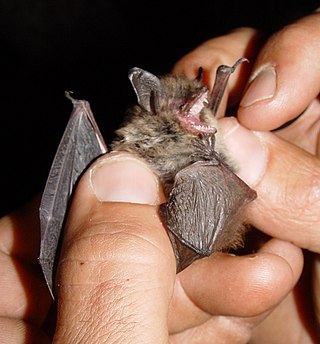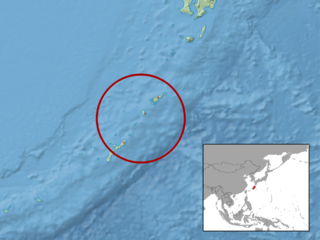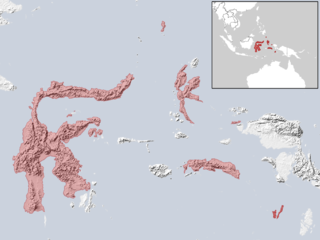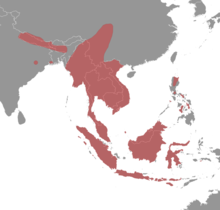
Vespertilionidae is a family of microbats, of the order Chiroptera, flying, insect-eating mammals variously described as the common, vesper, or simple nosed bats. The vespertilionid family is the most diverse and widely distributed of bat families, specialised in many forms to occupy a range of habitats and ecological circumstances, and it is frequently observed or the subject of research. The facial features of the species are often simple, as they mainly rely on vocally emitted echolocation. The tails of the species are enclosed by the lower flight membranes between the legs. Over 300 species are distributed all over the world, on every continent except Antarctica. It owes its name to the genus Vespertilio, which takes its name from a word for bat, vespertilio, derived from the Latin term vesper meaning 'evening'; they are termed "evening bats" and were once referred to as "evening birds".

Natterer's bat is a European vespertilionid bat with pale wings. It has brown fur tending to greyish-white on its underside. It is found across most of the continent of Europe, parts of the Near East and North Africa. It feeds on insects and other invertebrates which it catches on the wing or pursues on the ground.

The mouse-eared bats or myotises are a diverse and widespread genus (Myotis) of bats within the family Vespertilionidae. The noun "myotis" itself is a Neo-Latin construction, from the Greek "muós and "oûs", literally translating to "mouse-eared".

The silver-tipped myotis is a species of mouse-eared bat found in a range of lowland habitats in the Americas.

The black myotis is a vesper bat species from South and Central America.

The velvety myotis, is a species of vesper bat from South America.

Hodgson's bat, also called the copper-winged bat or black-and-orange myotis, is a species of vesper bat in the genus Myotis, the mouse-eared bats. Favouring mountain forests, it is found throughout Central, Southeast, and East Asia, from Afghanistan to Taiwan. It is about 5 centimetres (2.0 in) long and is distinguished from most other species of bat in this range by its yellowish colouration.

The greater Asiatic yellow bat is a species of vesper bat. It is found in Afghanistan, Bangladesh, Cambodia, China, India, Indonesia, Laos, Myanmar, Nepal, Pakistan, Philippines, Sri Lanka, Thailand and Vietnam.

The hairy-legged myotis is a species of mouse-eared bat. It is found from southern Tamaulipas in Mexico, through much of Central America and across northern South America as far east as Trinidad. Further south, it is found along the foothills of the Andes as far south as northern Argentina.

The fringed myotis is a species of vesper bat that is found in British Columbia, Mexico, and the western United States.

The Yanbaru whiskered bat(Myotis yanbarensis) is a species of vesper bat in the genus Myotis.

The Yuma myotis is a species of vesper bat native to western North America.

The Andaman horseshoe bat is a species of bat in the family Rhinolophidae. It is endemic to the Andaman Islands. During the day, it roosts in caves, but may also choose tree hollows.

Mehely's horseshoe bat is a species of insectivorous bat in the family Rhinolophidae found in Southern Europe and parts of the Middle East. It is distributed in a narrow band around the Mediterranean Sea from North-Western Africa across Portugal, Spain, the Balearics, southern France, Sardinia, Sicily and the Balkan Peninsula to Asia Minor.

Scotophilus is a genus of vespertilionid bats commonly called yellow bats. They are found in southern Asia and Africa. They are the only members of the tribe Scotophilini.

The Bocharic myotis or Bokhara whiskered bat is a species of mouse-eared bat in the family Vespertilionidae, described in 1950, and indigenous to Tajikistan, and Uzbekistan.

The Maluku myotis, also commonly known as the Arafura large-footed bat, is a species of mouse-eared bat. Native to Indonesia, and possibly New Guinea and northern Australia, it one of several species known as "fishing bats" because they catch their prey on the surface of water, scooping it up with their large feet.
The Taiwan broad-muzzled bat or Taiwan broad-muzzled myotis is a species of vesper bat found in Taiwan.

Myotis annatessae is a recently described species of bat in the family Vespertilionidae. It is endemic to Vietnam and Laos.




















